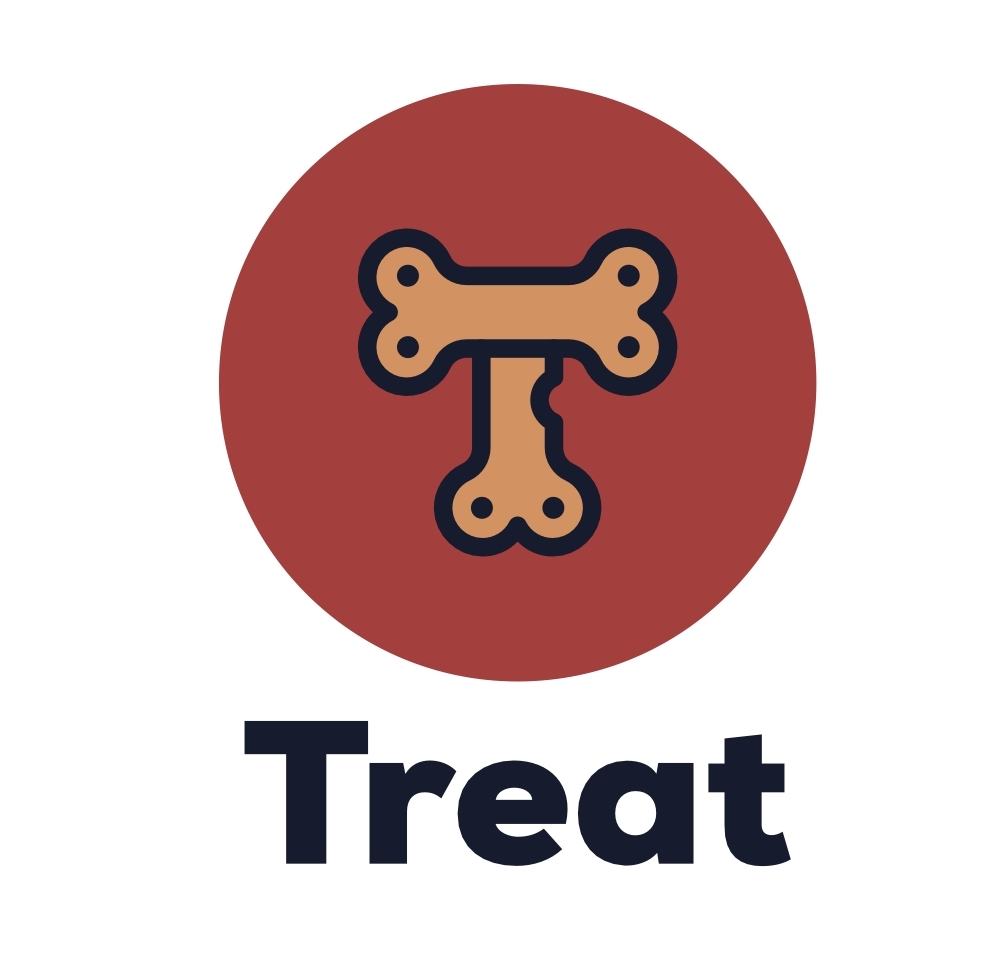Bitget: 4. miejsce w globalnym rankingu dziennego wolumenu obrotu!
Udział w rynku BTC63.46%
Nowe notowania na Bitget : Pi
BTC/USDT$102935.04 (+4.23%)Indeks strachu i chciwości73(Chciwość)
Indeks sezonu altcoinów:0(Sezon Bitcoina)
Całkowity przepływ netto spot ETF-ów Bitcoina +$117.4M (1 dn.);+$1.64B (7 dn.)Pakiet prezentów powitalnych dla nowych użytkowników o wartości 6200 USDT.Odbierz teraz
Handluj w dowolnym miejscu i czasie dzięki aplikacji Bitget. Pobierz teraz
Bitget: 4. miejsce w globalnym rankingu dziennego wolumenu obrotu!
Udział w rynku BTC63.46%
Nowe notowania na Bitget : Pi
BTC/USDT$102935.04 (+4.23%)Indeks strachu i chciwości73(Chciwość)
Indeks sezonu altcoinów:0(Sezon Bitcoina)
Całkowity przepływ netto spot ETF-ów Bitcoina +$117.4M (1 dn.);+$1.64B (7 dn.)Pakiet prezentów powitalnych dla nowych użytkowników o wartości 6200 USDT.Odbierz teraz
Handluj w dowolnym miejscu i czasie dzięki aplikacji Bitget. Pobierz teraz
Bitget: 4. miejsce w globalnym rankingu dziennego wolumenu obrotu!
Udział w rynku BTC63.46%
Nowe notowania na Bitget : Pi
BTC/USDT$102935.04 (+4.23%)Indeks strachu i chciwości73(Chciwość)
Indeks sezonu altcoinów:0(Sezon Bitcoina)
Całkowity przepływ netto spot ETF-ów Bitcoina +$117.4M (1 dn.);+$1.64B (7 dn.)Pakiet prezentów powitalnych dla nowych użytkowników o wartości 6200 USDT.Odbierz teraz
Handluj w dowolnym miejscu i czasie dzięki aplikacji Bitget. Pobierz teraz



Cena TreatTREAT
Notowany
Waluta wyceny:
PLN
zł0.01310+5.17%1D
Konwerter TREAT na PLN
TREAT
PLN
1 TREAT = 0.00 PLN
Bitget oferuje najniższe opłaty transakcyjne spośród wszystkich głównych platform handlowych. Im wyższy poziom VIP, tym korzystniejsze stawki.
Wykres cen
TradingView
Kapitalizacja rynkowa
Wykres cen Treat (TREAT/PLN)
Ostatnia aktualizacja: 2025-05-09 05:55:13(UTC+0)
Kapitalizacja rynkowa:--
W pełni rozwodniona kapitalizacja rynkowa:--
Wolumen (24h):--
Wolumen 24h/Kapitalizacja rynkowa:0.00%
24-godz. maks.:zł0.01374
24-godz. min.:zł0.01245
Najwyższa dotychczasowa wartość:zł0.5905
Najniższa dotychczasowa wartość:zł0.003785
Podaż w obiegu:-- TREAT
Całkowita podaż:
--TREAT
Wskaźnik obrotu:0.00%
Maks. podaż:
--TREAT
Cena w BTC:88.97 BTC
Cena w ETH:-- ETH
Cena przy kapitalizacji rynkowej BTC:
--
Cena przy kapitalizacji rynkowej ETH:
--
Kontrakty:--
Jakie jest Twoje dzisiejsze nastawienie do Treat?
Uwaga: te informacje mają wyłącznie charakter poglądowy.
Raport z analizy AI na temat Treat
Dzisiejsze najważniejsze wydarzenia na rynku kryptowalutWyświetl raport
Cena Treat w PLN na żywo dzisiaj
Aktualny dzisiejszy kurs Treat wynosi zł0.01310 PLN, a bieżąca kapitalizacja rynkowa wynosi --. Cena Treat wzrosła o 5.17% w ciągu ostatnich 24 godzin, a 24-godzinny wolumen obrotu wynosi zł0.00. Współczynnik konwersji TREAT/PLN (Treat na PLN) jest aktualizowany w czasie rzeczywistym.
Historia cen Treat (PLN)
Cena monety Treat odnotowała +246.00% w ciągu ostatniego roku. Najwyższa cena monety TREAT wyrażona w PLN w ostatnim roku wyniosła zł0.5905, a najniższa cena monety TREAT wyrażona w PLN w ostatnim roku wyniosła zł0.003785.
CzasZmiana ceny (%) Najniższa cena
Najniższa cena Najwyższa cena
Najwyższa cena 
 Najniższa cena
Najniższa cena Najwyższa cena
Najwyższa cena 
24h+5.17%zł0.01245zł0.01374
7d+0.29%zł0.01136zł0.01378
30d-1.14%zł0.01136zł0.01442
90d-44.73%zł0.01136zł0.03467
1y+246.00%zł0.003785zł0.5905
Cały okres+246.00%zł0.003785(--, Dzisiaj )zł0.5905(--, Dzisiaj )
Jaka jest najwyższa cena Treat?
Najwyższa w historii cena (ATH) Treat w PLN wynosi zł0.5905 — została ona odnotowana . W porównaniu do ATH Treat, bieżąca cena Treat jest niższa o 97.78%.
Jaka jest najniższa cena Treat?
Najniższa w historii cena (ATL) Treat w PLN wynosi zł0.003785 — została ona odnotowana . W porównaniu do ATL Treat, bieżąca cena Treat jest wyższa o 246.00%.
Prognoza ceny Treat
Jaka będzie cena TREAT w 2026?
W oparciu o historyczny model przewidywania wyników cenowych TREAT, przewiduje się, że cena TREAT osiągnie zł0.00 w 2026 roku.
Jaka będzie cena TREAT w 2031?
Oczekuje się, że w 2031 cena TREAT zmieni się o +43.00%. Ponadto spodziewa się, że do końca 2031 cena TREAT osiągnie poziom zł0.00, a skumulowany ROI wyniesie -100.00%.
Często zadawane pytania
Jaka jest obecna cena Treat?
Bieżąca cena monety Treat wynosi zł0.01 za (TREAT/PLN), przy czym bieżąca kapitalizacja rynkowa wynosi -- PLN. Wartość monety Treat podlega częstym wahaniom, ponieważ rynek kryptowalut jest aktywny przez całą dobę. Bieżąca cena monety Treat w czasie rzeczywistym i jej dane historyczne są dostępne na Bitget.
Czym jest 24-godzinny wolumen obrotu Treat?
W ciągu ostatnich 24 godzin wolumen obrotu Treat wyniósł --.
Jaka jest najwyższa dotychczasowa wartość Treat?
Najwyższa dotychczasowy cena Treat to zł0.5905. Ta najwyższa dotychczasowa cena jest najwyższą ceną dla Treat od czasu jego wprowadzenia.
Czy mogę kupić Treat na Bitget?
Tak, Treat jest obecnie dostępne na scentralizowanej giełdzie Bitget. Aby uzyskać bardziej szczegółowe instrukcje, zapoznaj się z naszym pomocnym przewodnikiem Jak kupić treat .
Czy mogę uzyskać stały dochód z inwestycji w Treat?
Oczywiście Bitget zapewnia platforma do handlu strategicznego, z inteligentnymi botami handlowymi do automatyzacji transakcji i osiągania zysków.
Gdzie mogę kupić Treat z najniższą opłatą?
Z przyjemnością informujemy, że platforma do handlu strategicznego jest już dostępny na giełdzie Bitget. Bitget oferuje wiodące w branży opłaty transakcyjne i głębokość, aby zapewnić inwestorom zyskowne inwestycje.
Aktualności związane z Treat
Aktualizacje: Treat
Rynek Treat
Posiadane Treat według koncentracji
Wieloryby
Inwestorzy
Sprzedaż detaliczna
Adresy Treat według czasu posiadania
Posiadacze
Cruisers
Traderzy
Wykres ceny coinInfo.name(12) na żywo

Globalne ceny Treat
Jaka jest obecna wartość Treat w innych walutach? Ostatnia aktualizacja: 2025-05-09 05:55:13(UTC+0)
TREAT do MXN
Mexican Peso
Mex$0.07TREAT do GTQGuatemalan Quetzal
Q0.03TREAT do CLPChilean Peso
CLP$3.26TREAT do UGXUgandan Shilling
Sh12.69TREAT do HNLHonduran Lempira
L0.09TREAT do ZARSouth African Rand
R0.06TREAT do TNDTunisian Dinar
د.ت0.01TREAT do IQDIraqi Dinar
ع.د4.55TREAT do TWDNew Taiwan Dollar
NT$0.1TREAT do RSDSerbian Dinar
дин.0.36TREAT do DOPDominican Peso
RD$0.2TREAT do MYRMalaysian Ringgit
RM0.01TREAT do GELGeorgian Lari
₾0.01TREAT do UYUUruguayan Peso
$0.14TREAT do MADMoroccan Dirham
د.م.0.03TREAT do OMROmani Rial
ر.ع.0TREAT do AZNAzerbaijani Manat
₼0.01TREAT do KESKenyan Shilling
Sh0.45TREAT do SEKSwedish Krona
kr0.03TREAT do UAHUkrainian Hryvnia
₴0.14- 1
- 2
- 3
- 4
- 5
Jak kupić Treat(TREAT)

Utwórz darmowe konto Bitget
Zarejestruj się na Bitget, podając swój adres e-mail/numer telefonu komórkowego i utwórz silne hasło, aby zabezpieczyć swoje konto.

Zweryfikuj swoje konto
Zweryfikuj swoją tożsamość, wprowadzając swoje dane osobowe i przesyłając zdjęcie ważnego dokumentu tożsamości.

Konwertuj Treat na TREAT
Wybierz spośród kryptowalut do handlu na Bitget.
Dowiedz się więcejDołącz do copy tradingu TREAT, obserwując wybitnych traderów.
Po zarejestrowaniu się na Bitget i pomyślnym zakupie tokenów USDT lub TREAT, możesz również rozpocząć copy trading, obserwując wybitnych traderów.
Nowe notowania na Bitget
Nowe notowania
Kup więcej
Gdzie mogę kupić Treat (TREAT)?
Kupuj krypto w aplikacji Bitget
Zarejestruj się w zaledwie kilka minut, aby kupować krypto kartą kredytową lub przelewem bankowym.
Sekcja wideo — szybka weryfikacja, szybki handel

Jak ukończyć weryfikację tożsamości na Bitget i zabezpieczyć się przed oszustwami?
1. Zaloguj się na swoje konto Bitget.
2. Jeśli jesteś nowym użytkownikiem Bitget, obejrzyj nasz przewodnik poświęcony tworzeniu konta.
3. Najedź kursorem na ikonę swojego profilu, kliknij opcję „Nie zweryfikowano” i wybierz „Zweryfikuj”.
4. Wybierz kraj lub region wydający dokument tożsamości oraz jego rodzaj, a następnie postępuj zgodnie z instrukcjami.
5. Wybierz opcję „Weryfikacja mobilna” lub „PC” w zależności od preferencji.
6. Podaj swoje dane, prześlij kopię dokumentu tożsamości i zrób selfie.
7. Prześlij swoje zgłoszenie i gotowe — weryfikacja tożsamości zakończona.
Inwestycje w kryptowaluty, w tym kupowanie Treat online za pośrednictwem Bitget, podlegają ryzyku rynkowemu. Bitget zapewnia łatwe i wygodne sposoby kupowania Treat. Dokładamy wszelkich starań, aby w pełni informować naszych użytkowników o każdej kryptowalucie, którą oferujemy na giełdzie. Nie ponosimy jednak odpowiedzialności za skutki, które mogą wyniknąć z kupna Treat. Ta strona i wszelkie zawarte w niej informacje nie stanowią poparcia dla żadnej konkretnej kryptowaluty.
Konwerter TREAT na PLN
TREAT
PLN
1 TREAT = 0.01310 PLN
Bitget oferuje najniższe opłaty transakcyjne spośród wszystkich głównych platform handlowych. Im wyższy poziom VIP, tym korzystniejsze stawki.
TREAT – źródła
Oceny Treat
Średnie oceny od społeczności
4.3
Ta treść została stworzona wyłącznie w celach informacyjnych.
Bitget Insights
Hustler🥰
13godz.
$SHM can be rewarding, but it’s not for the faint of heart. As a relatively new Layer 1 token, $SHM
$SHM can be rewarding, but it’s not for the faint of heart. As a relatively new Layer 1 token, $SHM combines the volatility of an emerging asset with the unpredictable nature of ecosystem news cycles. That means daily traders must navigate both technical chart patterns and sudden fundamental shifts — a recipe for high risk, but also short bursts of opportunity.
1. Liquidity and Spread Volatility
$SHM doesn’t yet have deep liquidity across major exchanges, which means spreads can widen quickly. For daily traders, this can cause slippage that erodes gains. Tight entries and disciplined exits are essential — and limit orders often perform better than market orders in thin volume environments.
2. News-Driven Spikes
Because Shardeum is in its early growth phase, protocol updates, validator incentives, or new dApp launches can trigger sharp price movements. Traders who watch GitHub commits, Twitter spaces, or ecosystem announcements can often front-run or ride these short-term moves.
3. Ideal for Range Trading — Not Trend Followers
$SHM often trades within identifiable ranges between major news cycles. Traders using RSI, Bollinger Bands, or MACD on 1H/4H charts can identify overbought/oversold zones for scalping. But trend-following strategies break down quickly when the token consolidates for weeks.
4. Whales and Order Book Manipulation
Like many small to mid-cap L1 tokens, $SHM is susceptible to sudden whale activity. Spoof orders, fake breakouts, and flash dumps are common. Smart traders wait for confirmation — not just candle wicks — before entering.
5. Risk-to-Reward Management is Crucial
Because daily $SHM price swings can exceed 5–10%, traders must use proper stop-losses and avoid overleveraging. A single failed setup can wipe out multiple gains if risk isn’t capped. Traders with strong discipline can benefit from volatility, while impulsive plays often end in losses.
Conclusion:
Daily trading $SHM can be smart — but only if you treat it like a professional, high-risk asset. It’s not yet a blue chip with stable liquidity, but it is a
BLUE+3.52%
TREAT-2.26%

cryptocontent
1d.
The crypto market rebound is real. Bitcoin’s pushing near ATH, altcoins are perking up like spring flowers, and retail is waking from hibernation. But here’s how to play it like a boss—not a bagholder:
Why It Might Be a Good Entry Point:
1. Momentum is Back: BTC above $98K brings media hype, liquidity, and FOMO.
2. Early-Stage Altcoin Cycle: Smart money rotates into alts after BTC surges.
3. Macro Support: The Fed's holding rates, inflation is cooling—risk assets thrive.
4. Volume Surge: Big wallets are buying, not dumping. On-chain data doesn't lie.
But Beware of These Red Flags:
Short-term overheated RSI: A local correction is always possible.
“Buy high” trap: If you're aping in without a plan, you're meat for the whales.
Low-quality tokens pumping: Rug season loves euphoric markets.
How to Enter Smart:
DCA (Dollar Cost Average): Spread buys over days/weeks. No FOMO YOLOs.
Start with Layer 1s: ETH, SOL, AVAX—solid tech, good upside.
Ride narratives: Watch AI coins, DePIN, RWA, and GameFi.
Secure profits: Set targets and trail your stops. The market doesn’t love diamond hands—it respects smart exits.
Verdict:
This is a solid entry point—if you treat it like a chess game, not roulette.
Zoom out. Zoom in. Strike with strategy.
Want a tailored list of projects or portfolio suggestions?
BTC-0.30%
TREAT-2.26%

asheerebraheem
1d.
Cryptocurrency for Beginners
Cryptocurrency is a revolutionary yet complex financial innovation that has captured global attention. For newcomers, understanding its fundamentals, risks, and potential is crucial before diving in. Here’s an educated breakdown to help you navigate this digital asset class wisely.
1. What Is Cryptocurrency?
Cryptocurrency is a decentralized digital currency that operates on blockchain technology—a secure, transparent, and immutable ledger. Unlike traditional money (fiat), crypto is not controlled by governments or banks. Instead, transactions are verified by a network of computers (nodes) through cryptography.
Key Concepts:
- Bitcoin ($BTC): The first and most well-known cryptocurrency, created in 2009 by Satoshi Nakamoto. It’s often called "digital gold" due to its limited supply (21 million coins).
- Altcoins: Alternative cryptocurrencies like Ethereum ($ETH), Solana ($SOL), and Cardano ($ADA), each with unique functionalities (e.g., smart contracts, faster transactions).
- Stablecoins: Cryptos pegged to stable assets like the US Dollar (e.g., $USDT, $USDC) to reduce volatility.
2. Why Does Crypto Have Value?
Unlike fiat money, most cryptocurrencies derive value from:
- Scarcity(fixed supply like Bitcoin).
- Utility (e.g., Ethereum’s smart contracts power decentralized apps).
- Decentralization (resistance to censorship).
- Speculation & Adoption (investor demand and institutional interest).
However, crypto is highly volatile—prices can swing dramatically based on news, regulations, and market sentiment.
3. How to Approach Crypto as a Beginner?
A. Educate Yourself First
- Understand blockchain basics (e.g., wallets, private keys, gas fees).
- Research before investing—many projects are scams ("rug pulls").
- Follow reputable sources (CoinMarketCap, CoinGecko, Binance Academy).
B. Start Small & Diversify
- Only invest what you can afford to lose.
- Consider dollar-cost averaging (DCA) to reduce timing risks.
- Diversify beyond Bitcoin (e.g., Ethereum, top altcoins, stablecoins).
C. Security Is Non-Negotiable
- Use hardware wallets (Ledger, Trezor) for long-term storage.
- Enable two-factor authentication (2FA) on exchanges.
- Beware of phishing scams—never share private keys.
D. Understand the Risks
- Regulatory uncertainty: Governments may impose restrictions.
- Market manipulation: "Pump and dump" schemes are common.
- Technology risks: Smart contract bugs, exchange hacks.
4. The Future of Crypto
While skeptics dismiss crypto as a bubble, proponents believe it’s the future of finance due to:
- DeFi (Decentralized Finance): Banking without intermediaries.
- NFTs & Web3: Digital ownership and decentralized internet.
- Institutional adoption:Hedge funds, corporations, and ETFs entering the space.
However, mass adoption depends on scalability, regulation, and real-world utility.
Final Thought for Beginners
Cryptocurrency offers exciting opportunities but comes with high risk. It’s not a get-rich-quick scheme—treat it as a long-term learning journey. Start slow, prioritize security, and never invest emotionally.
BTC-0.30%
TREAT-2.26%

FaithyMaria-BTC
2d.
Bitcoin Bulls Beware: The $99.9K Test Could Shake Confidence
Bitcoin is edging closer to the coveted $100,000 mark, but this momentous milestone could pose a serious psychological and technical challenge for even the most seasoned bulls. As it flirts with $99.9K, the market mood is buoyant—but caution is warranted.
The recent rally has been fueled by a mix of renewed institutional interest, favorable regulatory winds, and growing on-chain activity. Bitcoin’s network is more active than it has been in months, signaling broader participation and optimism. Yet beneath the surface, trading volume has shown signs of weakness—an early warning that momentum may not be as robust as it appears.
What makes $100,000 such a formidable level isn’t just the round number appeal. It represents a psychological ceiling—where profit-taking, hesitation, and even fear of reversal could converge. Many traders may treat this point as a trigger to secure gains, potentially sparking increased volatility or a pullback.
From a technical standpoint, Bitcoin has broken out of its recent consolidation phase, which is a bullish signal. But without strong volume and sustained buying pressure, the move could falter just short of six figures. A rejection at $100K could send prices back to test support levels near $93K–$90K.
This is a classic moment in market psychology. Bulls may feel emboldened, but confidence can turn quickly at critical thresholds. Whether Bitcoin breaks through or bounces back, this test will define sentiment heading into the second half of the year.
For investors, the strategy here is discipline. Don’t chase the hype. Instead, prepare for both outcomes: a breakout that could open the door to $120K—or a correction that offers a chance to buy strength on the dip.
$BTC
BTC-0.30%
MOVE+2.94%

Bpay-News
3d.
Vitalik: The quality of the underlying proof system of the L2 network is equally important and should gradually enter the second stage as it develops.
In response to community member Daniel Wang's suggestion of #BattleTested for the naming of Stage 2 of the L2 network, Ethereum co-founder Vitalik responded on X Platform: "This is a good reminder that Stage 2 is not the only factor that affects security, the quality of the underlying proof system is equally important. Here is a simplified mathematical model that shows when to enter Stage 2: Each Security Council member has a 10% independent chance of "breaking"; we treat activity failures (refusal to sign or inaccessible keys) and security failures (signing the wrong thing or keys being hacked) as equally likely; goal: minimize the probability of protocol collapse under the above assumptions. *Stage 0 Security Council is 4/7, Stage 1 is 6/8; note that these assumptions are very imperfect. In reality, members of the Security Council have "common mode failures": they may collude, or they may all be coerced or hacked in the same way, etc. This makes both Stage 0 and Stage 1 less secure than the model shows, so entering Stage 2 earlier than the model implies is the best option. Also, note that the probability of a proving system crashing is greatly reduced by turning the proving system itself into a multisig of multiple independent systems (this is what I advocated for in my previous proposal). I suspect that all phase 2 deployments in the first few years will be like this. With that in mind, here is the chart. The X-axis is the probability of a proving system crashing. The Y-axis is the probability of a protocol crashing. As the quality of the proving system improves, the best phases move from phase 0 to phase 1, and then from phase 1 to phase 2. Doing phase 2 with a phase 0 quality proving system is the worst. In short, @l2beat should ideally show proving system audits and maturity metrics (preferably of proving system implementations rather than entire rollups so we can reuse) as well as phases. ”
X+4.08%
MOVE+2.94%
Powiązane aktywa
Popularne kryptowaluty
Wybór 8 najlepszych kryptowalut według kapitalizacji rynkowej.
Ostatnio dodane
Ostatnio dodane kryptowaluty.
Porównywalna kapitalizacja rynkowa
Spośród wszystkich aktywów Bitget, te 8 pod względem kapitalizacji rynkowej najmniej dzieli od: Treat
Dodatkowe informacje na temat Treat
Omówienie monety
O monecie
Informacje handlowe
Aktualizacje monety
Handluj
Earn

































